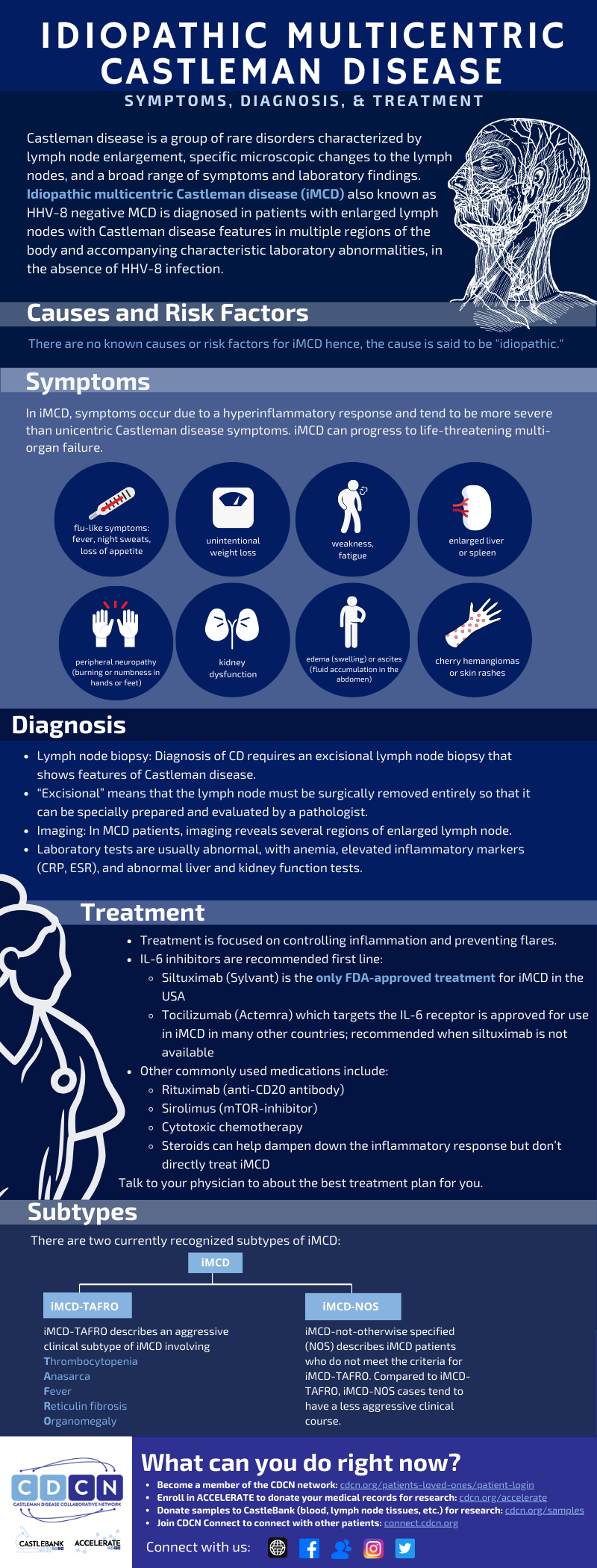Diagnosis
Castleman disease (CD) can be difficult to diagnose as it is both a rare disease and an imitator of many other diseases. Patients can have the same symptoms as some cancers and some autoimmune diseases. Due to the complexity of the disease, physicians often need to rule out many other diseases before CD is suspected.
There are various types of Castleman disease and they have very important differences in symptoms, disease course, and treatment. However, they all share specific changes to the lymph nodes that must be observed through a microscope. Therefore, patients must undergo an excisional lymph node biopsy to be diagnosed with CD. This is absolutely necessary so that patients with other diseases are not incorrectly diagnosed with Castleman disease.
According to our international, evidence-based guidelines for UCD and iMCD, the tests needed for diagnosis should include:
- Lymph node biopsy: A doctor takes a sample of tissue from a lymph node and looks at it under a microscope to identify features of Castleman disease.
- UCD is diagnosed after a lymph node biopsy to investigate solitary lymphadenopathy
- Enlarged lymph nodes (≥1 cm in short-axis diameter) in a single lymph node station/region
- iMCD is diagnosed by histopathologic lymph node features consistent with the iMCD spectrum. Features along the iMCD spectrum include:
- Regressed/atrophic/atretic germinal centers, often with expanded mantle zones composed of concentric rings of lymphocytes in an “onion skinning” appearance
- FDC prominence
- Vascularity with a “lollipop” appearance
- Enlarged lymph nodes (≥1 cm in short-axis diameter) in ≥2 lymph node stations
- UCD is diagnosed after a lymph node biopsy to investigate solitary lymphadenopathy
- Laboratory tests: A doctor takes a sample of blood to evaluate the levels of substances in the body that may be signs of the disease, such as a hemoglobin levels, platelet counts, inflammation markers (CRP/ESR), and markers of organ dysfunction such as liver function tests, albumin, creatinine as well as HIV/HHV8 testing for HHV-8-associated MCD.
- Imaging tests: Tests such as PET-CT scans allow doctors to locate enlarged lymph nodes and activity of those lymph nodes in the body.
*Castleman Disease can only be diagnosed through biopsy (removing an enlarged lymph node) and examination under the microscope to identify features of Castleman disease.
A clinical trial for the medication sirolimus for iMCD patients who did not improve on siltuximab or tocilizumab is open and enrolling patients. Patients can learn more about this trial at cdcn.org/trial. The trial has been posted to the federal registry for all clinical trials here.

